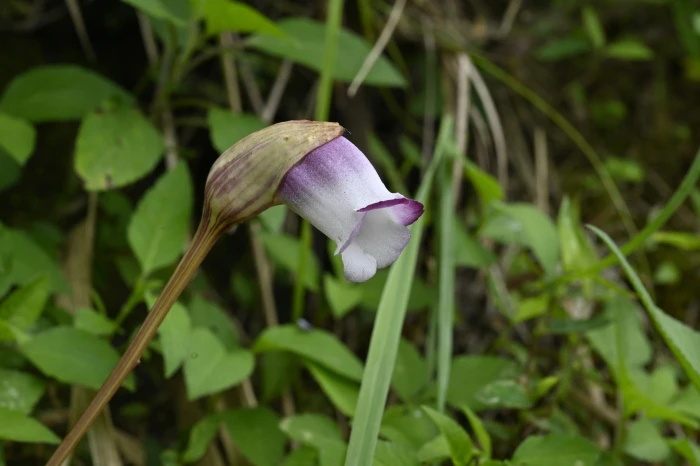Indian Broomrape
(Aeginetia indica)
Indian Broomrape (Aeginetia indica)
/
/

曾昱承 Yu-Cheng Zeng
CC BY 4.0
Image By:
曾昱承 Yu-Cheng Zeng
Recorded By:
Copyright:
CC BY 4.0
Copyright Notice:
Photo by: 曾昱承 Yu-Cheng Zeng | License Type: CC BY 4.0 | License URL: http://creativecommons.org/licenses/by/4.0/ | Rights Holder: 曾昱承 Yu-Cheng Zeng | Publisher: iNaturalist | Date Created: 2023-10-07T11:22:43-07:00 |

























Estimated Native Range
Climate Requirements
| • Precipitation | 72" - 87" |
| • High Temp. | 80°F - 92°F |
| • Low Temp. | 30°F - 60°F |
Summary
Aeginetia indica, commonly known as Indian broomrape or forest ghost flower, is a holoparasitic annual herb that thrives in the understory of moist deciduous and semi-deciduous forests, primarily in tropical and subtropical Asia, including New Guinea. It is often found in association with plants from families such as Cannaceae and Poaceae, to which it attaches itself for sustenance. Indian broomrape typically exhibits a striking appearance with its vibrant blue to purplish flowers that bloom from late summer to early autumn, adding a splash of color to the forest floor. The plant lacks chlorophyll and therefore does not photosynthesize, relying entirely on its host for nutrients.
In cultivation, Indian broomrape is not commonly found due to its parasitic nature and specific host requirements. However, it is recognized for its medicinal properties in traditional practices and plays a cultural role in regions like the Nepal Eastern Himalayas, where it is used during the Teej festival to symbolize the deities Shiva and Parvati. Cultivating Aeginetia indica requires a suitable host plant and a moist, shaded environment that mimics its natural forest habitat. Gardeners should be aware that this plant can be difficult to manage due to its parasitic lifestyle and potential to harm host plants.CC BY-SA 4.0
In cultivation, Indian broomrape is not commonly found due to its parasitic nature and specific host requirements. However, it is recognized for its medicinal properties in traditional practices and plays a cultural role in regions like the Nepal Eastern Himalayas, where it is used during the Teej festival to symbolize the deities Shiva and Parvati. Cultivating Aeginetia indica requires a suitable host plant and a moist, shaded environment that mimics its natural forest habitat. Gardeners should be aware that this plant can be difficult to manage due to its parasitic lifestyle and potential to harm host plants.CC BY-SA 4.0
Plant Description
- Plant Type: Herb
- Height: 0.5-1 feet
- Width: 0.5-1 feet
- Growth Rate: Moderate
- Flower Color: Pink, Purple
- Flowering Season: Summer, Fall
- Leaf Retention:
Growth Requirements
- Sun: Part Shade
- Water: Medium
- Drainage: Medium
Common Uses
Bee Garden, Butterfly Garden
Natural Habitat
Moist deciduous and semi-deciduous forest understories in tropical and subtropical Asia, including New Guinea
Other Names
Common Names: Forest Ghost Flower, Omoigusa, Ye Gu, Indian Broomrape
Scientific Names: Aeginetia indica, Aeginetia abbreviata, Aeginetia abbreviata, Aeginetia aeginetia, Aeginetia boninensis, Aeginetia indica, Aeginetia indica var. alba, Aeginetia indica var. boninensis, Aeginetia indica var. boninensis
GBIF Accepted Name: Aeginetia indica